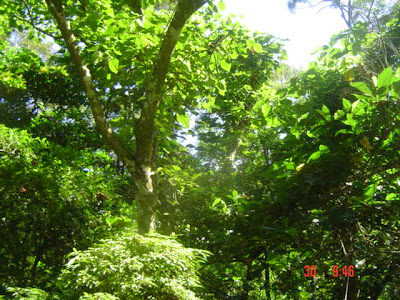
They pass winter as eggs and scatter as tiny larvae in spring. Females are generally larger (17-25 mm.) than males (7-10 mm.). The adult female has stripes of yellow and dark blue with red towards the rear of the abdomen. During Autumn, males can be seen in female webs for copulation.. After they mate, the female spins an egg sack on a tree, laying 400 - 1500 eggs in a sack, where their life cycle ends by late autumn or early winter.

In Japanese folklore, a legendary creature named Jorogumo, who is actually a spider, can transform itself to a beautiful woman and attracts a man, traps him in her seduction, tie and finally eat him up!
Japanese researchers have genetically modified silkworms with nephila drag lines genes and successfully created a silk thread that is stronger, softer and more durable than conventional silk.
If bitten by this spider, one can feel a local pain and redness with blisters forming, but it resolves within 24 hours, but the bite mark, remains. Its venom is potent, but not lethal to humans.
Next time you see this, take a photo, but make sure you are in a safe distance.!
Thanks to Wikipedia, for the information.




No comments:
Post a Comment